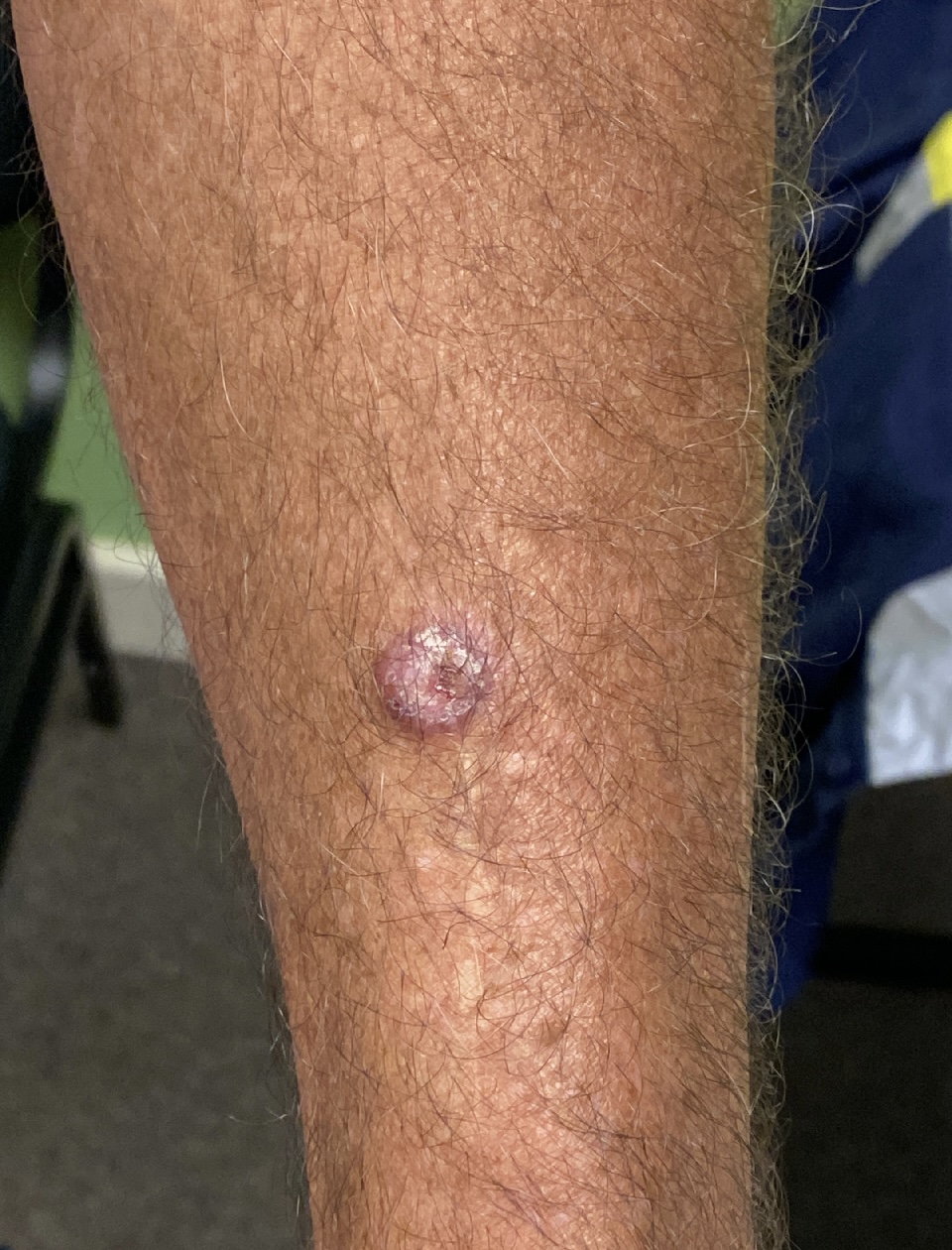- Chris Comans
- 1 Comment
When it comes to skin cancer, the arms are one of the most frequently affected areas I see in screenings. They are constantly exposed to the sun during our daily activities, yet many people don’t realise just how vulnerable this part of the body is.
In Western Australia, where we live with some of the highest ultraviolet (UV) radiation levels in the world, arms take the brunt of long summers, outdoor work, and recreational exposure. From gardening and fishing to driving with the window down, the arms are rarely out of the sun.
This constant exposure makes them a prime site for Squamous Cell Carcinomas (SCCs) and also means they are the second most common site for melanoma in women.
Why the Arms Are So Susceptible
The arms are chronically exposed to sunlight, often more than the legs. Short sleeves, singlets, and rolled-up shirts leave the skin bare. Even when we think we’re “not outside for long,” the UV damage accumulates daily.
Driving is another overlooked factor. In WA, I often see more damage on the right arm of drivers because of its position at the window, exposed to direct sunlight. This pattern of uneven damage is especially noticeable in older clients who have spent decades behind the wheel.
Unlike the face, which people often protect with sunscreen or hats, the arms are frequently forgotten in sun safety routines. Over time, this lack of protection contributes to skin ageing, sunspots, precancerous lesions, and skin cancer.
A Real Example: SCC on the Arm
The image I’ve included here shows a lesion on the elbow area consistent with a likely Squamous Cell Carcinoma (SCC). It appears as a raised, crusty pink lesion, which is typical of SCCs that develop on chronically sun-damaged skin.
SCCs are especially common on the forearms and elbows, areas that are exposed to direct sunlight almost daily. Many of my clients initially mistake them for bruises, bites, or persistent sores, only realising they are something more when they don’t heal.
This is why the arms require close inspection during a skin check. Lesions on these areas can become invasive if left untreated.
Common Skin Cancers Seen on the Arms
1. Squamous Cell Carcinoma (SCC):
The most common cancer found on the arms. Appears as scaly patches, persistent sores, or tender raised growths. Can spread if ignored, making early detection vital.
2. Basal Cell Carcinoma (BCC):
Also found on the arms, though less common than SCCs. Appears as shiny nodules or pinkish sores. Typically slow-growing but still damaging if untreated.
3. Melanoma:
The arms are the second most common place for women to get melanoma. Can appear as a new dark mole, or changes in an existing one. Must be detected early due to its potential to spread quickly.
WA’s Harsh Climate and Lifestyle
The Western Australian climate is one of the harshest in terms of UV exposure. Outdoor sports, gardening, construction, fishing, and beach activities all contribute to years of accumulated sun damage on the arms.
I often see arm cancers in men who have spent years working outdoors with rolled sleeves, and in women whose forearms have been exposed to the sun while driving or at the beach. The pattern is clear: sun exposure today becomes tomorrow’s skin cancer risk.
Protecting Your Arms from Skin Cancer
1. Use Sunscreen Daily:
Apply sunscreen to both forearms and hands as part of your morning routine. Reapply every two hours if outdoors.
2. Choose Protective Clothing:
Long-sleeved shirts made from lightweight, breathable fabric can drastically cut UV exposure. Look for clothing with a UPF rating for added protection.
3. Mind the Small Habits:
Cover your arms while driving, gardening, or fishing. These daily exposures add up significantly.
4. Check Your Arms Regularly:
Examine both forearms and elbows. Look for rough patches, new spots, or lesions that don’t heal.
Why Early Detection Is Critical
SCCs on the arms can spread if ignored, while melanomas can become life-threatening if not caught early. The good news is that both can be managed effectively when identified at the earliest stage.
As a Skin Cancer Screening Practitioner, I pay close attention to the arms during checks because of how often they are affected. Many people don’t realise just how vulnerable this area is, but I see the results of years of exposure every week.
Final Thoughts
The arms are one of the most common sites for skin cancer in Western Australia. With SCCs frequently appearing here, and melanoma being especially common for women, it’s an area we all need to protect and monitor carefully.
Sunscreen, clothing, and regular checks can make all the difference. By making arm protection part of your routine, you can significantly reduce your risk and ensure that if a skin cancer does develop, it is caught early and managed quickly.


Back Skin Cancer: Early Detection via Dermoscopic Assessment